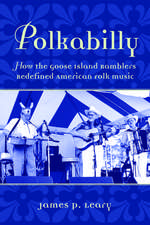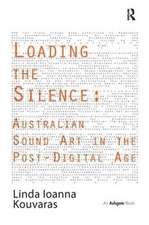Musical Gestures: Sound, Movement, and Meaning
Editat de Rolf Inge Godøy, Marc Lemanen Limba Engleză Paperback – 18 dec 2009
| Toate formatele și edițiile | Preț | Express |
|---|---|---|
| Paperback (1) | 442.01 lei 22-36 zile | +31.72 lei 6-12 zile |
| Taylor & Francis – 18 dec 2009 | 442.01 lei 22-36 zile | +31.72 lei 6-12 zile |
| Hardback (1) | 1010.60 lei 43-57 zile | |
| Taylor & Francis – 18 dec 2009 | 1010.60 lei 43-57 zile |
Preț: 442.01 lei
Preț vechi: 480.45 lei
-8% Nou
Puncte Express: 663
Preț estimativ în valută:
84.61€ • 91.93$ • 71.11£
84.61€ • 91.93$ • 71.11£
Carte disponibilă
Livrare economică 31 martie-14 aprilie
Livrare express 15-21 martie pentru 41.71 lei
Preluare comenzi: 021 569.72.76
Specificații
ISBN-13: 9780415998871
ISBN-10: 0415998875
Pagini: 320
Ilustrații: 3 black & white tables, 44 black & white halftones, 62 black & white line drawings
Dimensiuni: 152 x 229 x 23 mm
Greutate: 0.76 kg
Ediția:1
Editura: Taylor & Francis
Colecția Routledge
Locul publicării:Oxford, United Kingdom
ISBN-10: 0415998875
Pagini: 320
Ilustrații: 3 black & white tables, 44 black & white halftones, 62 black & white line drawings
Dimensiuni: 152 x 229 x 23 mm
Greutate: 0.76 kg
Ediția:1
Editura: Taylor & Francis
Colecția Routledge
Locul publicării:Oxford, United Kingdom
Recenzii
- "The book proposal is quite well prepared, reflecting the experience of the editors both in terms of publishing themselves and in attracting high-quality submissions from other authors for edited volumes and peer-reviewed journals. They have a good grasp of the evolution and importance of the field of sound and music computing, and put forward here a volume that can have a significant impact on that growth.... I would use this book as supplemental material in my course on the psychology of music—I would recommend offering a contract for this book."
- "The three strongest aspects of the book would be its beginning at the beginning; the breadth of material covered; and the clarity of the writing style (in Godøy’s article in particular). These three strengths lead me to believe that the book would be ideal for a graduate course in music and gesture…. I would recommend offering a contract for the book. It provides an accessible summary of a variety of approaches to music and gesture, which is a rapidly emerging and expanding field."
- "The proposed book Music and Gesture Foundations tackles a relatively new topic that is quickly becoming fundamental to multiple fields. Since the topic is so interdisciplinary, a book establishing methodological, terminological, and conceptual foundations is particularly crucial. Such a book has the potential to advance collaboration and understanding across fields, and to accelerate research in the area. The proposed book’s core strength is its stated aim to provide a systematic development of the concept of gesture in music.... The thoroughness and intellectual rigor of the manuscript is excellent. Subtle points are systematically addressed, and there is a nice balance between reviewing existing findings and developing frameworks for future inquiry. As it stands, however, the manuscript suffers from one serious problem: the quality of the English. I recommend that someone be added to the editorial team who can rework the entire manuscript, modifying sentence structure, grammar, and vocabulary so that it reads well in English..... In sum, I believe this to be a high quality manuscript targeting an important topic that people from many different fields will find interesting. I recommend publication. The book fills a niche not currently occupied, and presents an admirably thorough overview of current research in this area. "
- "In summary, then, I think that the novelty and strength of the book’s topic, its appeal to interdisciplinary issues, and its insights into the works of different scholars are its main strengths. Its main weaknesses lie in its rather uncertain role as an "introductory" text, its unidiomatic English, and its somewhat untraditional perspective from an American musicological perspective (though this is, also, a strength!). Based on the appeal of the project as a volume of scholarship that breaks new ground, I would recommend offering a contract for this book. This recommendation is unreserved: I believe the volume has considerable academic importance as it stands. "
Notă biografică
Rolf Inge Godøy is professor of musicology at the University of Oslo in Norway.
Marc Leman is research professor of systematic musicology at Ghent University in Belgium.
Marc Leman is research professor of systematic musicology at Ghent University in Belgium.
Cuprins
Foreword, Preface, 1. Why study musical gestures?, Marc Leman and Rolf Inge Godøy, 2. Musical gestures: concepts and methods in research , Alexander Refsum Jensenius, Marcelo M. Wanderley, Rolf Inge Godøy, and Marc Leman, 3. Gesture in performance, Sofia Dahl with contributions from Frédéric Bevilacqua, Roberto Bresin, Martin Clayton, Laura Leante, Isabella Poggi, and Nicolas Rasamimanana , 4: Music and Gestures: a historical introduction and survey of earlier research, Albrecht Schneider, 5. Gestural Affordances of Musical Sound, Rolf Inge Godøy, 6. Music, gesture, and the formation of embodied meaning , Marc Leman, 7. The Functional Role and Bio-Kinetics of Basic and Expressive gestures in Activation and Sonification, Leon van Noorden , Chapter 8. Gesture and Timbre, Tor Halmrast, Knut Guettler, Rolf Bader, and Rolf Inge Godøy, 9. Sensorimotor control of sound-producing gestures}, Sylvie Gibet, 10. Visual Gesture Recognition: from motion tracking to expressive gesture, Antonio Camurri and Thomas B. Moeslund, 11. Conductors' Gestures and Their Mapping to Sound Synthesis, Gunnar Johannsen and Teresa Marrin Nakra, Contributors, Index
Descriere
We experience and understand the world, including music, through body movement–when we hear something, we are able to make sense of it by relating it to our body movements, or form an image in our minds of body movements. Musical Gestures is a collection of essays that explore the relationship between sound and movement. It takes an interdisciplinary approach to the fundamental issues of this subject, drawing on ideas, theories and methods from disciplines such as musicology, music perception, human movement science, cognitive psychology, and computer science.















